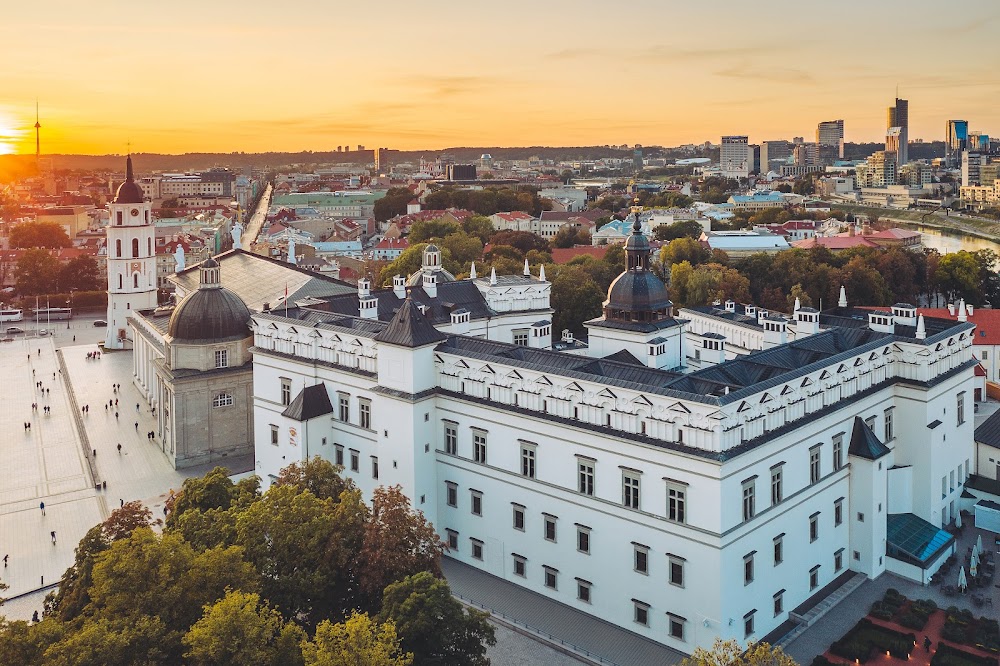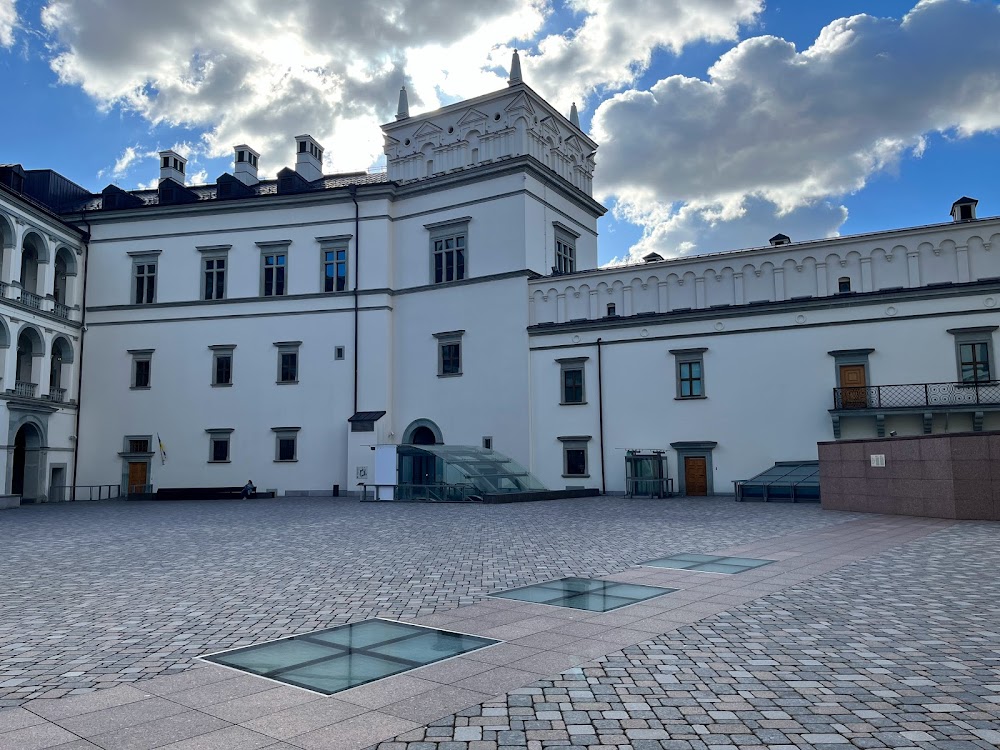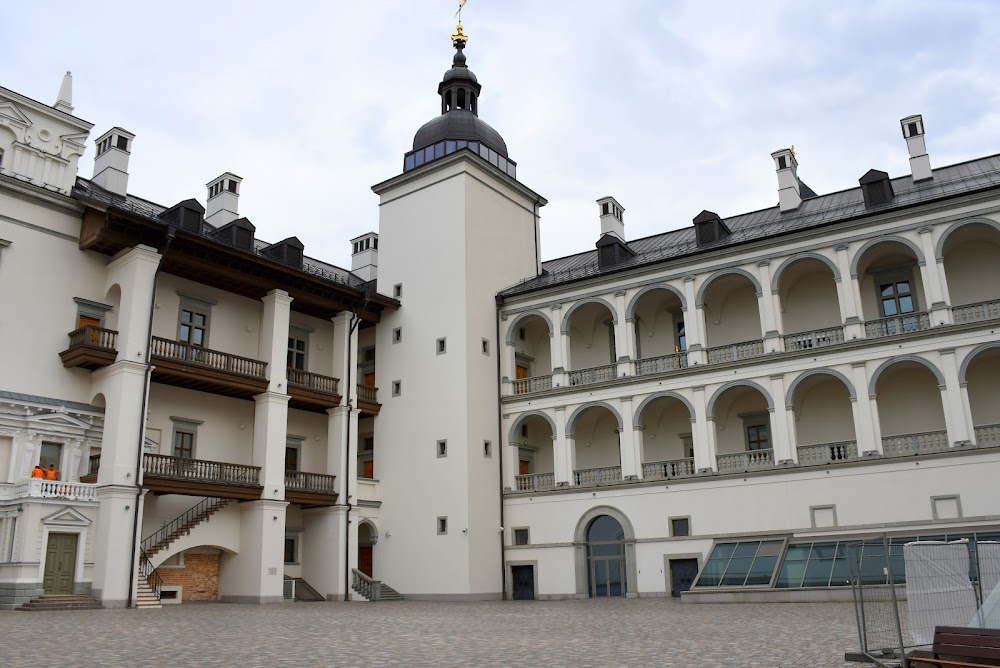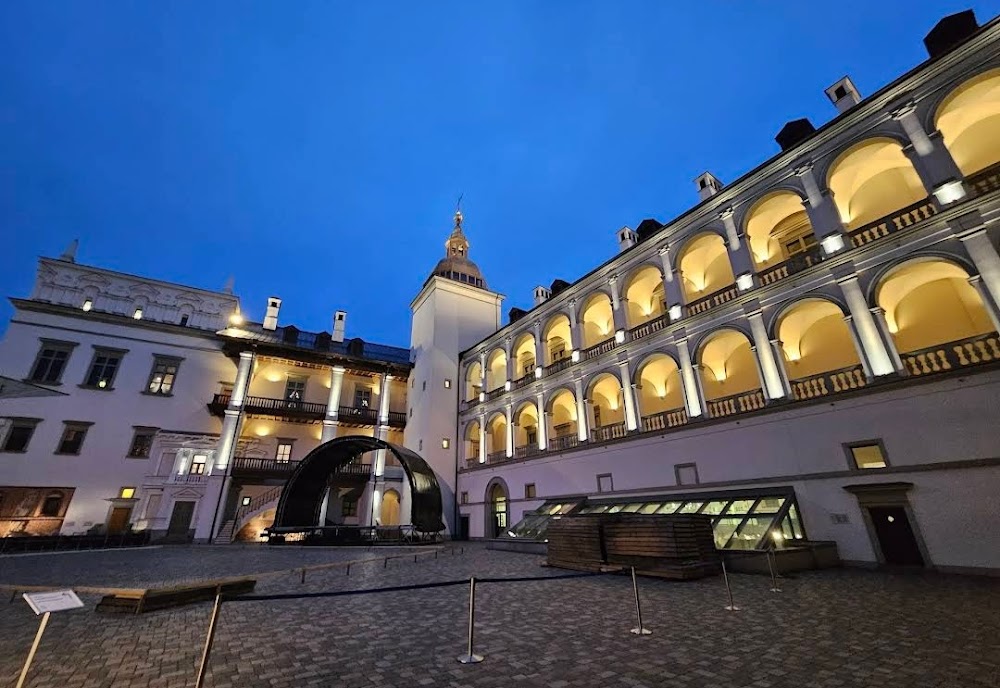Palace of the Grand Dukes of Lithuania (Lietuvos didžiųjų kunigaikščių rūmai)
Overview
The Palace of the Grand Dukes of Lithuania, located in the heart of Vilnius, is a stunning embodiment of the region's historical and cultural legacy. Nestled within the Vilnius Lower Castle complex, the palace rests at the foot of Gediminas Hill, offering visitors a glimpse into Lithuania's illustrious past.
Construction of the original palace began in the 15th century during the reign of Grand Duke Vytautas the Great. This strategically chosen location in Vilnius symbolized the power and influence of the Grand Duchy of Lithuania. The initial design featured Gothic architectural elements, reflecting the prevalent style of the era.
Over the centuries, the palace underwent numerous renovations and expansions. In the 16th century, Grand Duke Sigismund the Old spearheaded a significant reconstruction, transforming the palace into a modern Renaissance residence. Italian architects were commissioned to redesign the structure, infusing it with elegant Renaissance attributes such as ornate facades, grand staircases, and intricately decorated halls.
The most remarkable transformations occurred during the 17th century under the Vasa dynasty, which incorporated Baroque elements into the palace's architecture. This redesign mirrored the evolving tastes and growing influence of Western Europe on Lithuanian architectural styles.
For many years, the palace served as the political, cultural, and administrative center of the Grand Duchy of Lithuania. It hosted royal weddings, state ceremonies, and diplomatic meetings, playing a vital role in the region's governance. However, its prominence waned following the partitions of the Polish-Lithuanian Commonwealth in the late 18th century. By the early 19th century, the once-majestic palace fell into disrepair and was ultimately demolished.
For nearly two centuries, the site stood empty, silently witnessing Lithuania's tumultuous history. It wasn't until the early 2000s that serious efforts to rebuild the palace commenced. The Lithuanian government, alongside a dedicated team of historians, architects, and archaeologists, embarked on a meticulous reconstruction project aimed at restoring the palace to its former grandeur.
Using historical documents, paintings, and surviving architectural fragments, the reconstruction team painstakingly recreated the Renaissance and Baroque features that once adorned the palace. They combined modern construction techniques with traditional craftsmanship to ensure an authentic and sustainable restoration.
In 2009, the revitalized Palace of the Grand Dukes of Lithuania was officially opened to the public. Today, it functions as a museum and cultural venue, showcasing Lithuania's rich history and heritage. Visitors can delve into exhibitions that explore the Grand Duchy's medieval past, Renaissance art, and Baroque architecture, as well as the captivating stories of the grand dukes and their families.
The palace is more than just a monument to history; it is a vibrant part of Vilnius's cultural life. It hosts a variety of events, including concerts, historical reenactments, and educational programs, ensuring that the spirit of Lithuania's grand past remains alive for future generations.
The Palace of the Grand Dukes of Lithuania stands as a proud symbol of resilience and rebirth, embodying the enduring spirit and cultural richness of the Lithuanian people. Visitors to this magnificent site are sure to leave with a deeper appreciation for Lithuania's fascinating history and vibrant culture.








